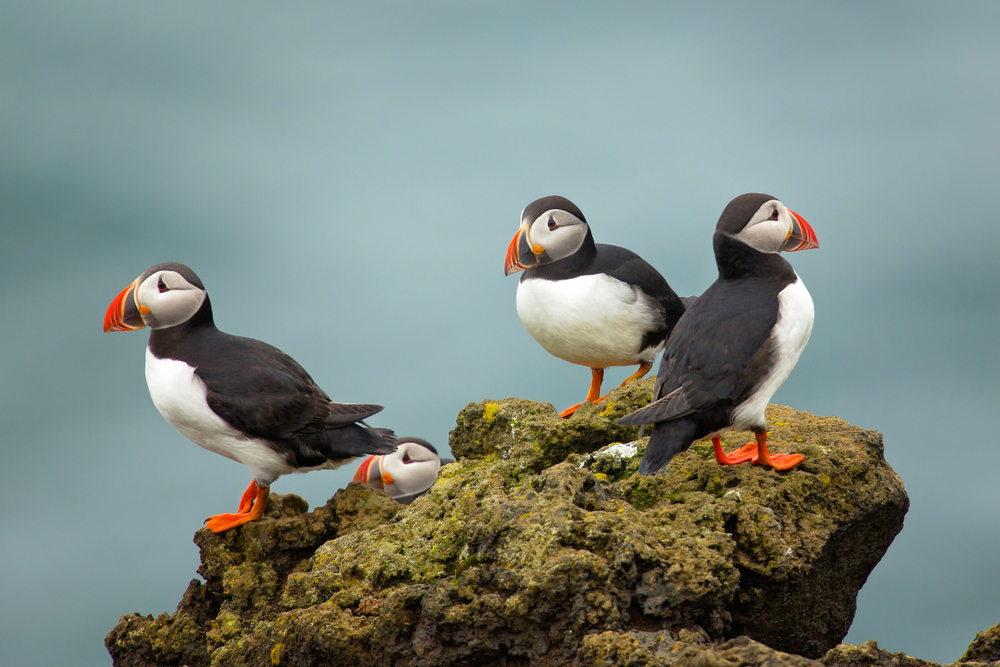An innovative AI system is helping conservationists remotely track wild puffin populations off the coast of Scotland.
Monitoring the population of puffins is historically challenging. Rangers have typically counted them manually by lying on the ground and probing into burrows, counting pairs of puffins and their eggs.
This often results in angry puffins biting or scratching in retaliation, and considering the sheer number of burrows in a given area – typically in the tens of thousands – it proves to be time-consuming and labor-intensive.
The Scottish weather conditions are treacherous enough without rangers also having to sustain attacks by angry puffins, adorable as they may be.
Puffins are included on the Birds of Conservation Concern 4 Red List, signifying substantial concerns about their numbers in the wild. One contributing factor is that puffin couples only produce one egg yearly.
Consequently, dedicated rangers participate in numerous counting projects at locations such as the Farne Islands, the Shetland Islands, and the Isle of May off the east coast of Scotland to monitor whether the population is increasing or decreasing.
To support puffin monitoring strategies on the Isle of May, SSE Renewables, a wind farm developer and operator, is piloting a novel method to count puffins utilizing AI. Supported by Microsoft, Avanade, and NatureScot, the project could revolutionize how animal colonies are counted.
The ongoing project on the Isle of May employs technology to spot, identify, and count puffins, to minimize disruption to the birds’ breeding and feeding habits during the construction of wind farms. “As the investment in renewable energy continues, it’s ever more important to ensure that developments, like wind farms, are not having any detrimental environmental effects,” stated Simon Turner, CTO of Data and AI at Avanade.
SSE Renewables and Avanade installed 4 cameras housed in sturdy steel cases across the island. The cameras capture live footage of puffins, which return from sea to breed in late March or early April.
The AI technology employed for this project uses image recognition models. The model is fed with labeled images of with and without puffins and taught to distinguish between them. The system is even capable of distinguishing between individual puffins.
Clare Barclay, Chief Executive Officer at Microsoft UK, describes the process, “The AI will draw a box around each puffin it spots and give them unique tags like ‘001, 002, 003’…When the camera moves to the next frame, the AI understands that the puffin closest to a particular box is the same puffin, it’s just taken a step to the left or right, so it redraws the box around the bird. This happens over and over again for every frame of the footage. Even if the puffin flies out of the frame, the AI system will recognise where it flew out of sight, and attempt to track it again if it comes back. That’s how we can track and count individual puffins.”
This isn’t the first time image recognition has been used for conservation and wildlife tracking. An AI system installed in Norway has been tracking populations of invasive Pacific salmon which are threatening native species. An AI system was designed to detect pollution events on the English coast.
Oliver Abell, Account Manager at SSE Renewables’s Engineering Centre, said, “We could monitor salmon to make sure they are able migrate in rivers, for example…This technology could work in any environment in which you want to be able to monitor a species and be hands-off, either because it’s too remote or because you don’t want humans interfering in that environment.”
AI’s role in wildlife conservation is always evolving, providing researchers with innovative solutions for tackling tricky environmental problems.





